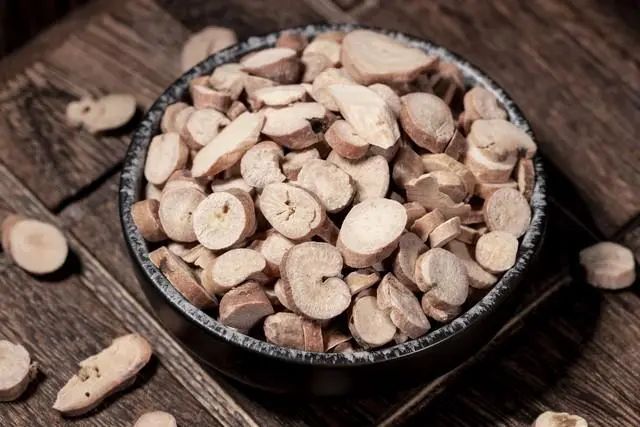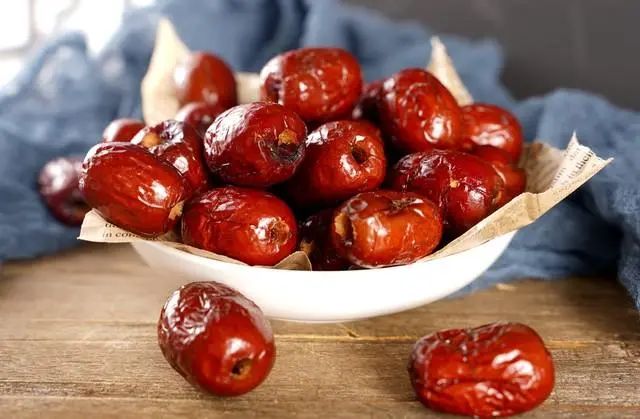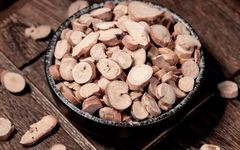Spring winds are about to fade without a trace, all directed towards the peonies in the southern garden. After this flower has truly withered, this life should be intertwined with this flower. Shao Yao (Peony) and Mu Dan (Tree Peony) are known as the “two exceptional flowers,” and both of these plants can be used medicinally, ranking highly in the field of traditional Chinese medicine. Today, let’s discuss this gentle, nourishing, blood-replenishing herb, Shao Yao (Peony). The earliest Shao Yao did not distinguish between white and red, but now we know that Bai Shao (White Peony) is good for nourishing blood, while Chi Shao (Red Peony) is good for cooling the blood. Today, we will focus on Bai Shao. The best quality Bai Shao comes from Hangzhou, Zhejiang, hence it is also called Hang Bai Shao. It has a bitter, sour, and sweet taste, is slightly cold in nature, and enters the liver and spleen meridians.

Bai Shao nourishes blood and regulates menstruation. The liver is responsible for storing blood, and blood deficiency is often seen in the heart and liver organs. When liver blood is deficient, symptoms may include pale complexion or sallow skin, dizziness, palpitations, brittle nails, and dry eyes. Bai Shao is an excellent herb for nourishing and replenishing blood. A common formula for liver blood deficiency is Si Wu Tang (Four Substance Decoction), which combines Shu Di Huang (Rehmannia), Dang Gui (Angelica), and Chuan Xiong (Szechuan Lovage) to nourish and invigorate the blood. For women, blood is essential; insufficient blood can affect menstruation, leading to delayed periods, light flow, dysmenorrhea, or even amenorrhea. Bai Shao nourishes liver blood and regulates menstruation, making it a key herb for menstrual regulation. It is often combined with Shu Di Huang, Dang Gui, etc., to form Si Wu Tang, which serves as a foundational formula for nourishing blood and regulating menstruation.

Dang Gui (Angelica) calms the liver and alleviates pain. The liver is responsible for smooth flow, and when liver qi is easily disturbed, it can lead to excess liver yang. Blood is associated with yin and has a nourishing and cooling effect. When blood is deficient, the liver may lose nourishment, leading to excess liver yang, which can cause dizziness, tinnitus, flushed face, irritability, and anger. Bai Shao has the function of nourishing blood and calming the liver, softening the liver and alleviating urgency. It is often combined with herbs like Niuxi (Achyranthes), Dihuang (Rehmannia), Muli (Oyster Shell), and Zheshi (Hematite) to help calm the liver and subdue excess yang. When there is heat in the liver meridian, blood deficiency can lead to symptoms of wind due to blood deficiency, such as high fever, irritability, muscle spasms, and delirium. Bai Shao is slightly cold in nature, which can nourish liver blood, clear liver heat, and extinguish liver wind. It is often combined with herbs like Juhua (Chrysanthemum), Gouteng (Uncaria), Jiangcan (Silkworm), and Wugong (Centipede) to help calm the liver and subdue wind.

Cramps are related to the liver storing blood, which governs the tendons. The tendons require the nourishment of blood; when blood is deficient, the tendons lose nourishment, leading to spasms and muscle cramps. Bai Shao nourishes blood and alleviates urgency, and for cramps and pain caused by blood deficiency, it is often combined with herbs like Gan Cao (Licorice) and Hong Zao (Red Dates).

Hong Zao (Red Dates) can restrain yin and stop sweating. Yin and fluids share the same source; excessive sweating can easily lead to fluid loss, as yin and blood share the same source. The sour taste can astringe, and Bai Shao can be used for night sweats due to yin deficiency, often combined with Wu Wei Zi (Schisandra) and Fu Xiao Mai (Einkorn Wheat). For spontaneous sweating caused by qi deficiency, it can be combined with Huang Qi (Astragalus) and Bai Zhu (Atractylodes) to tonify qi and secure the exterior to stop sweating.

For excessive sweating, Shao Yao has distinctions between red and white. According to the “Bencao Qiuzhen”: “Red Shao Yao and white Shao Yao have similar treatments, but the white has the power to restrain yin and benefit the nutrients, while the red has the intention to disperse evil and move blood. The white can drain wood from the center, while the red can activate stagnation in the blood.” Therefore, red Shao Yao excels in dispersing stasis and alleviating pain, while white Shao Yao is good for nourishing blood, restraining yin, softening the liver, and alleviating urgency.


